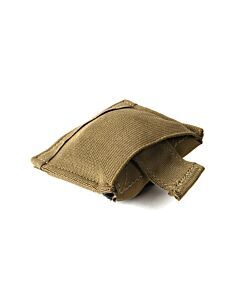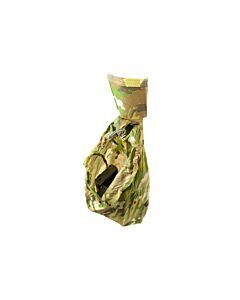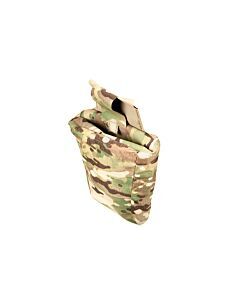Aug 27th 2024
Essential Guide to Dump Pouches: Design, Function, and Tactical Use
This week’s video blog article was brought to you by industry friend, Chuck Pressburg
Always Better® | August 28th, 2024
Join Chuck Pressburg from Presscheck Training and Consulting for a discussion on dump pouches. Chuck covers the importance of a well-designed dump pouch in this week’s video blog post.
So, what is the purpose of a dump pouch? It’s ideal for retaining anything that doesn’t already have a dedicated pouch. An example might be if a casualty has a pistol that needs to be secured. That would be a great use of a dump pouch. You can also retain empty or partial mags, but Chuck expresses his views on that in the video. He emphasizes that dump pouches should not be conflated with administrative pouches and suggests alternative ways to manage partially loaded magazines in tactical environments.
Chuck is incredibly passionate about snag hazards on gear. He shows a common one he sees in the field and explains that a snag hazard could just as easily be the opening of a dump pouch. Unlike round doorknobs that are not ADA compliant, door levers are now becoming more prevalent. What does that do for assaulters? It increases the risk of snag hazards. It’s for this reason that he emphatically suggests that a requirement of a dump pouch is that they must be stowable – and worn that way until absolutely necessary.
He also warns against dump pouches that are built with a stiffened loop, waiting to catch on objects and risk derailing your tactics. Blue Force Gear offers two different dump pouch styles (three variants) and they meet the expectations of Chuck Pressburg. The Ultralight Dump Pouch comes in a MOLLE version and a Belt version. As its name suggests, it’s extremely lightweight and so compact that it barely takes up any room on your kit (a 2x2 MOLLE field). It’s very often mounted underneath another pouch so that it’s out of the way completely until needed.
The other model that Blue Force Gear offers is the Medium Dump Pouch. This is Chuck’s preferred dump pouch because he feels it bridges the gap between low-profile and structured. The fish trap design allows objects to be secured without working their way back out of the pouch. It’s still stowable and should be worn that way until deployed.
Watch the video for many more considerations not mentioned here and to get a dose of Chuck’s passion for why gear design is paramount.
Overview of Dump Pouches
Dump Pouches Highlighted in Video
|
$53.95 |
Ten-Speed Ultralight Dump Pouch $59.95 |
|
$96.95 |
About Chuck Pressberg
SGM(R) Pressburg retired from the US Army on January 1, 2017 after 26 years of active service, mostly in Special Operations and Special Missions Units. After Infantry and Airborne Training in 1990, Chuck completed the Ranger Indoctrination Program and was assigned to the 1st Bn, 75th Ranger Regiment. His experience includes Rifle and Sniper Squad Leader, Asymmetric Warfare Group, and Operation Iraqi Freedom conducting Small Kill Team (SKT) operations and Direct Action raids in support of conventional and Special Operations Forces. Chuck now offers tactical and mindset instruction through his company, Presscheck Training and Consulting, LLC.
About Blue Force Gear®
BFG, headquartered in Pooler, Georgia, has been a trusted name in professional-grade gear and accessories for two decades. Their commitment to excellence, innovative designs, and use of premium materials have made them a favorite among military, law enforcement, and recreational shooters worldwide.
Press Contact
PR Contact: Marketing@blueforcegear.com
Sales and Dealer Contact: Sales@blueforcegear.com



